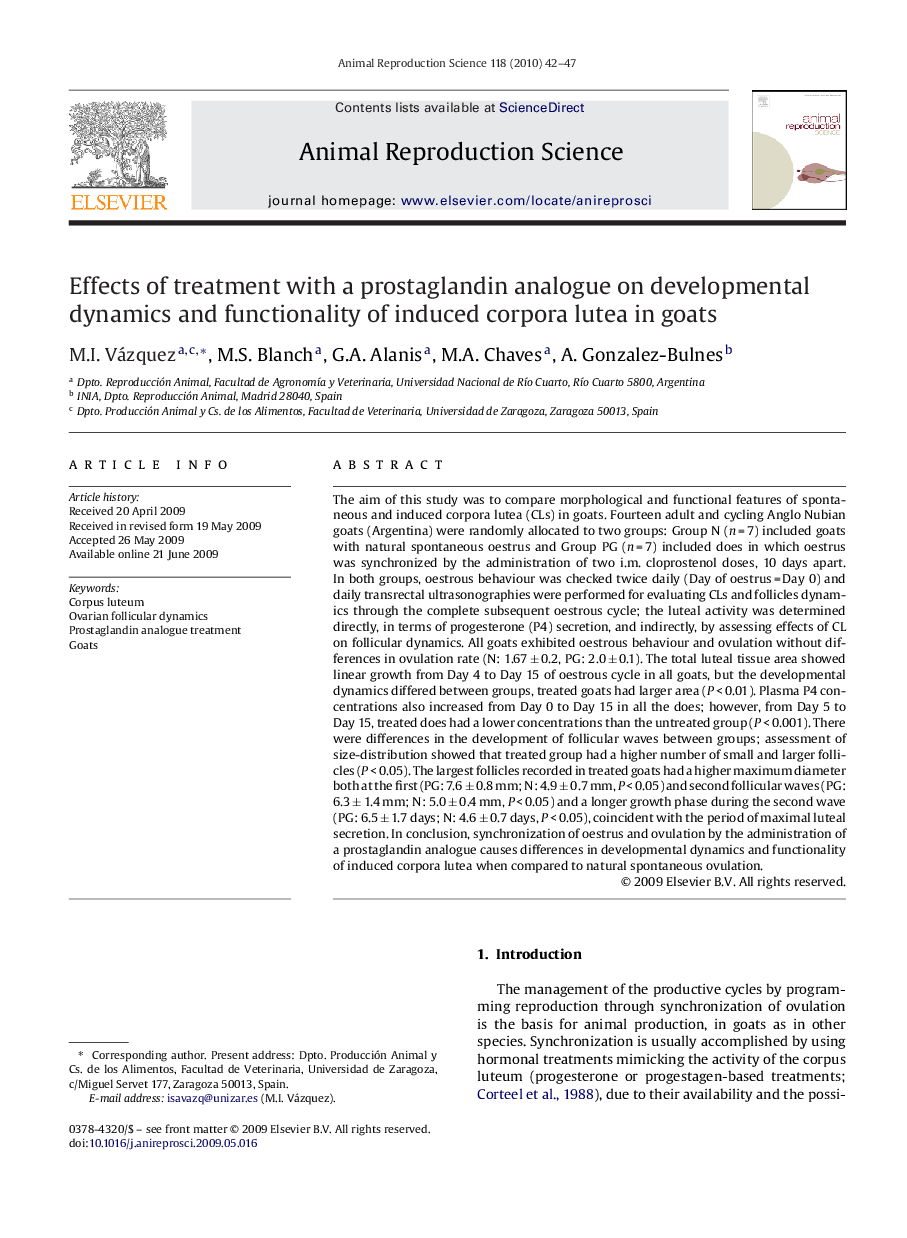| Article ID | Journal | Published Year | Pages | File Type |
|---|---|---|---|---|
| 2073876 | Animal Reproduction Science | 2010 | 6 Pages |
The aim of this study was to compare morphological and functional features of spontaneous and induced corpora lutea (CLs) in goats. Fourteen adult and cycling Anglo Nubian goats (Argentina) were randomly allocated to two groups: Group N (n = 7) included goats with natural spontaneous oestrus and Group PG (n = 7) included does in which oestrus was synchronized by the administration of two i.m. cloprostenol doses, 10 days apart. In both groups, oestrous behaviour was checked twice daily (Day of oestrus = Day 0) and daily transrectal ultrasonographies were performed for evaluating CLs and follicles dynamics through the complete subsequent oestrous cycle; the luteal activity was determined directly, in terms of progesterone (P4) secretion, and indirectly, by assessing effects of CL on follicular dynamics. All goats exhibited oestrous behaviour and ovulation without differences in ovulation rate (N: 1.67 ± 0.2, PG: 2.0 ± 0.1). The total luteal tissue area showed linear growth from Day 4 to Day 15 of oestrous cycle in all goats, but the developmental dynamics differed between groups, treated goats had larger area (P < 0.01). Plasma P4 concentrations also increased from Day 0 to Day 15 in all the does; however, from Day 5 to Day 15, treated does had a lower concentrations than the untreated group (P < 0.001). There were differences in the development of follicular waves between groups; assessment of size-distribution showed that treated group had a higher number of small and larger follicles (P < 0.05). The largest follicles recorded in treated goats had a higher maximum diameter both at the first (PG: 7.6 ± 0.8 mm; N: 4.9 ± 0.7 mm, P < 0.05) and second follicular waves (PG: 6.3 ± 1.4 mm; N: 5.0 ± 0.4 mm, P < 0.05) and a longer growth phase during the second wave (PG: 6.5 ± 1.7 days; N: 4.6 ± 0.7 days, P < 0.05), coincident with the period of maximal luteal secretion. In conclusion, synchronization of oestrus and ovulation by the administration of a prostaglandin analogue causes differences in developmental dynamics and functionality of induced corpora lutea when compared to natural spontaneous ovulation.
